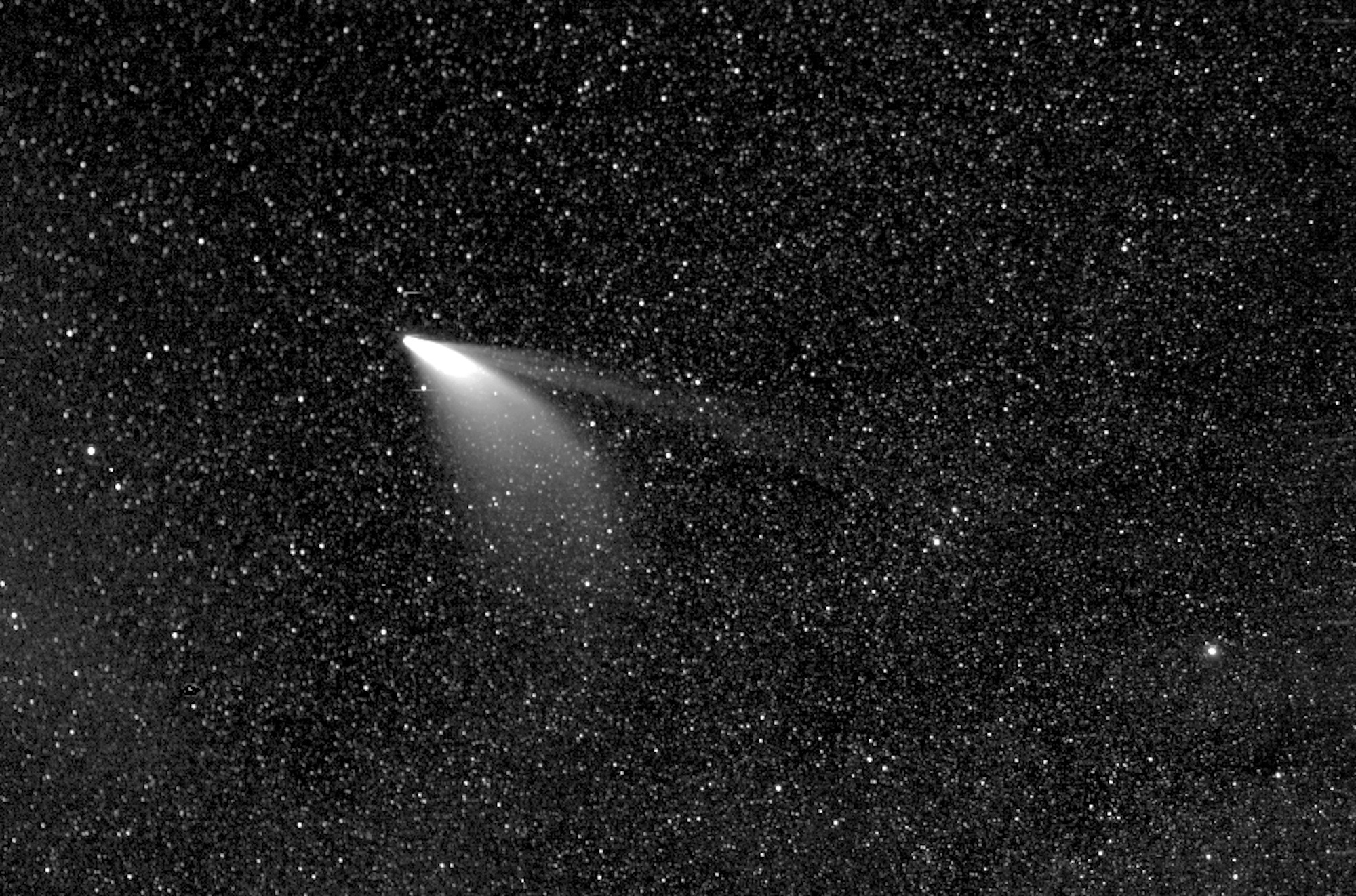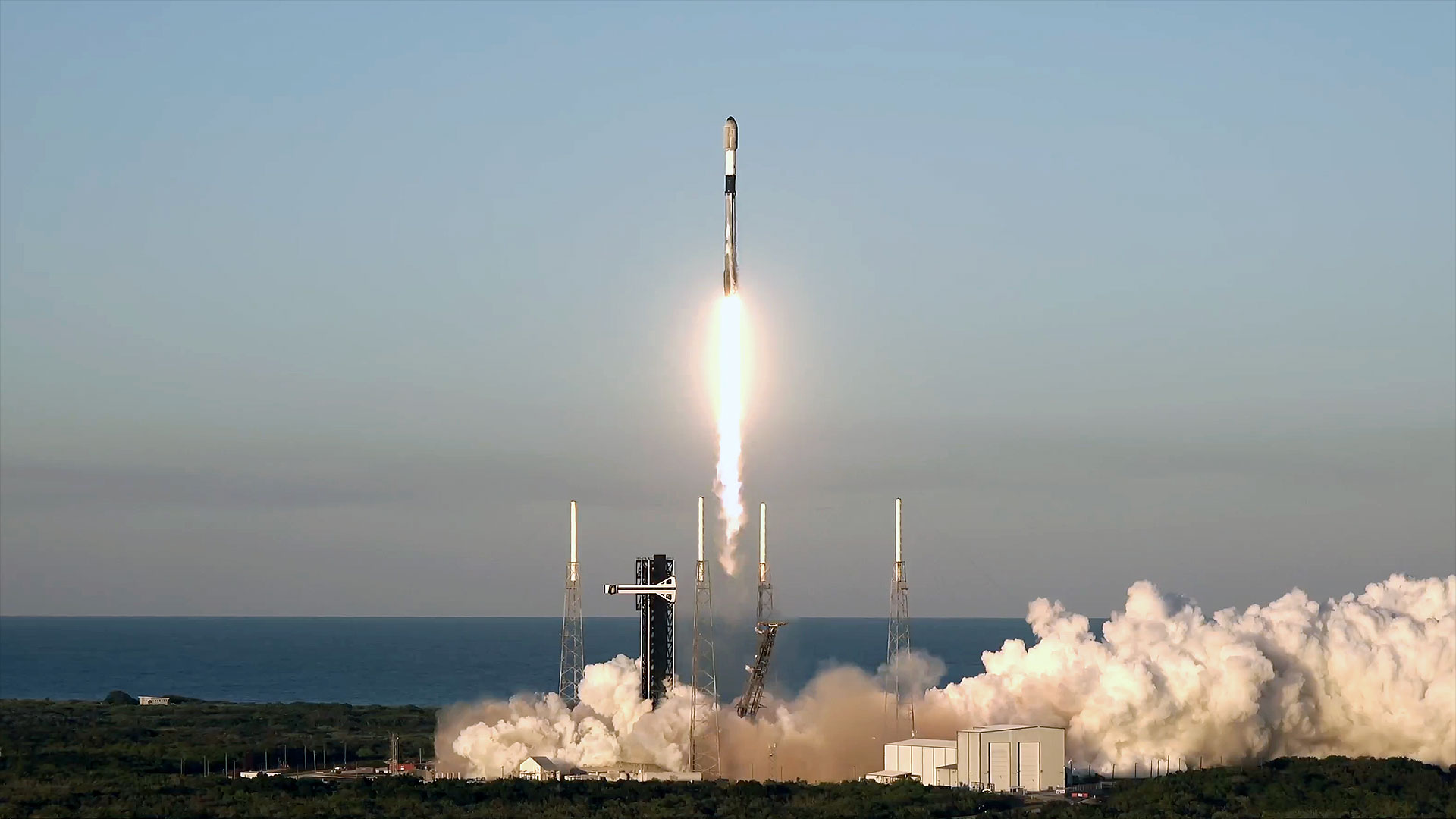Dazzling Comet NEOWISE spotted by NASA sun-studying probe (photo)

NASA's record-breaking Parker Solar Probe (PSP) has given us a great new look at the gorgeous comet that's been gracing our predawn skies.
PSP, which has gotten closer to the sun and traveled faster than any other spacecraft, captured a brilliant shot of Comet NEOWISE on July 5, two days after the icy wanderer made its closest approach to the sun.
The photo shows two tails on NEOWISE — a broad, lower dust stream and a narrow ion tail, which is composed of gases that have had electrons stripped by powerful solar radiation.
Related: Comet NEOWISE could give skywatchers a dazzling show this month. Here's what to know.

"These ionized gases are buffeted by the solar wind — the sun's constant outflow of magnetized material — creating the ion tail that extends directly away from the sun," NASA officials wrote in a description of the photo, which was released today (July 10).
"Parker Solar Probe's images appear to show a divide in the ion tail," they added. "This could mean that Comet NEOWISE has two ion tails, in addition to its dust tail, though scientists would need more data and analysis to confirm this possibility."
PSP launched in August 2018 to study the sun in unprecedented detail. The mission aims to help solve some long-standing solar mysteries, including how the solar wind gets accelerated to such high speeds and why the sun's outer atmosphere, or corona, is so much hotter than the solar surface.
Breaking space news, the latest updates on rocket launches, skywatching events and more!
The PSP loops around the sun on a highly elliptical path and gathers most of its data during its close solar approaches, the most recent of which occurred on June 7. The spacecraft happened to be positioned well on July 5 to capture NEOWISE shortly after the comet had a solar encounter of its own, the heat of which boosted the icy object's activity considerably.
Comet NEOWISE was discovered on March 27 by NASA's Near-Earth Object Wide-field Infrared Survey Explorer spacecraft (hence the name, which is officially C/2020 F3 NEOWISE). The comet has been visible to observers in clear, dark predawn skies for the last week or so, showing up close to the northeast horizon.
And there will soon be an evening show as well: Comet NEOWISE should start appearing low in the northwest evening sky on Sunday (July 12), according to Space.com skywatching columnist Joe Rao.
"In the evenings to follow, the comet will rapidly climb higher in the sky," Rao wrote recently. "On July 22, NEOWISE will make its closest approach to the Earth, a distance of 64 million miles (103 million kilometers). By July 25, the comet will appear 30 degrees ('three fists') up from the west-northwest horizon as darkness falls. And on July 30-31, the comet will be passing just to the north of the fine star cluster of Coma Berenices, or Berenice's Hair."
So go out and take a look for yourself when you get a chance. And do it soon: Comets are notoriously fickle beasts, so there's no guarantee that NEOWISE will stay visible for long, especially since it's now speeding away from the sun. (And you can't just wait until NEOWISE comes back to Earth's neighborhood — that won't happen for more than 6,000 years.)
Mike Wall is the author of "Out There" (Grand Central Publishing, 2018; illustrated by Karl Tate), a book about the search for alien life. Follow him on Twitter @michaeldwall. Follow us on Twitter @Spacedotcom or Facebook.

Michael Wall is a Senior Space Writer with Space.com and joined the team in 2010. He primarily covers exoplanets, spaceflight and military space, but has been known to dabble in the space art beat. His book about the search for alien life, "Out There," was published on Nov. 13, 2018. Before becoming a science writer, Michael worked as a herpetologist and wildlife biologist. He has a Ph.D. in evolutionary biology from the University of Sydney, Australia, a bachelor's degree from the University of Arizona, and a graduate certificate in science writing from the University of California, Santa Cruz. To find out what his latest project is, you can follow Michael on Twitter.
